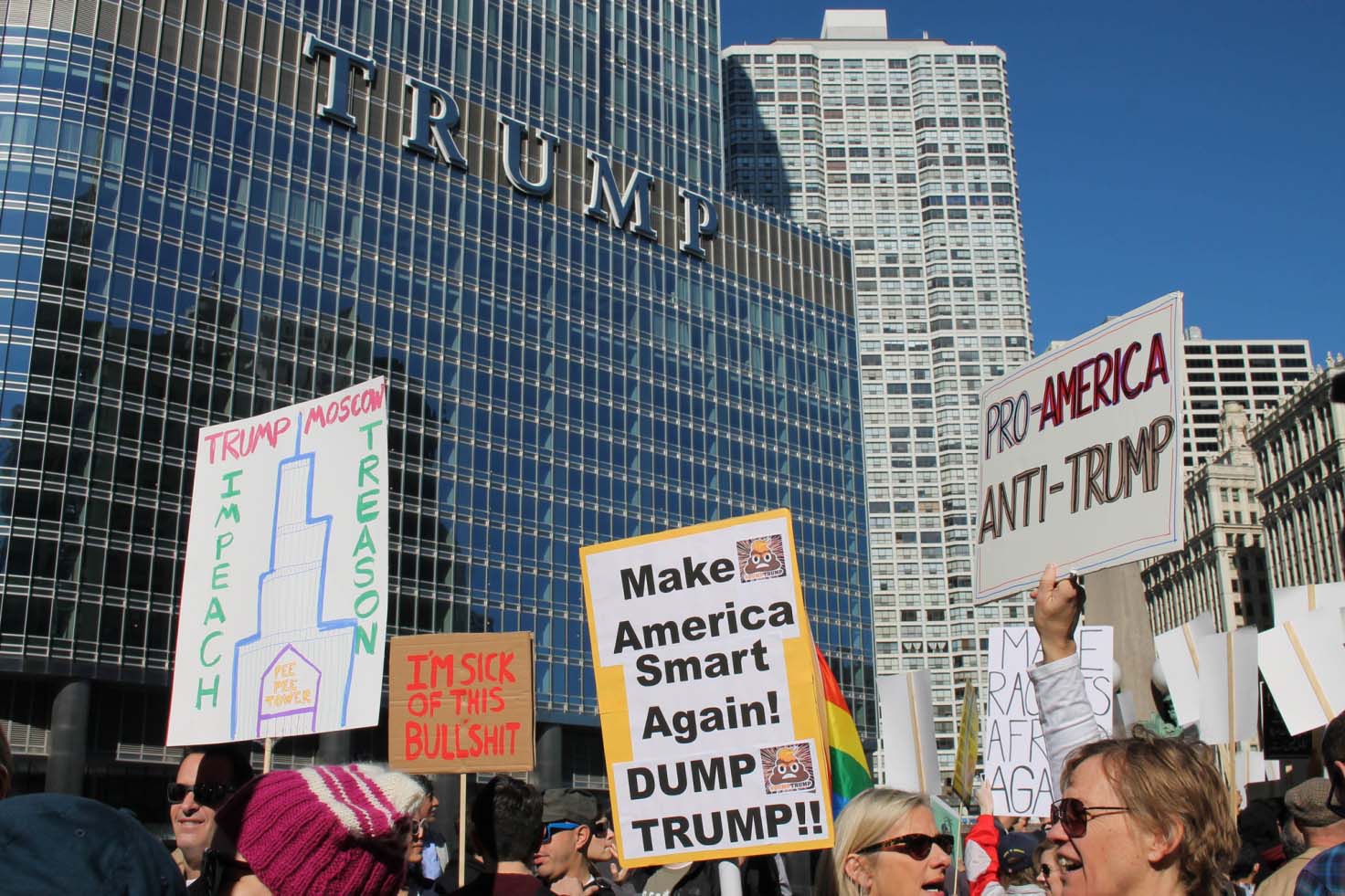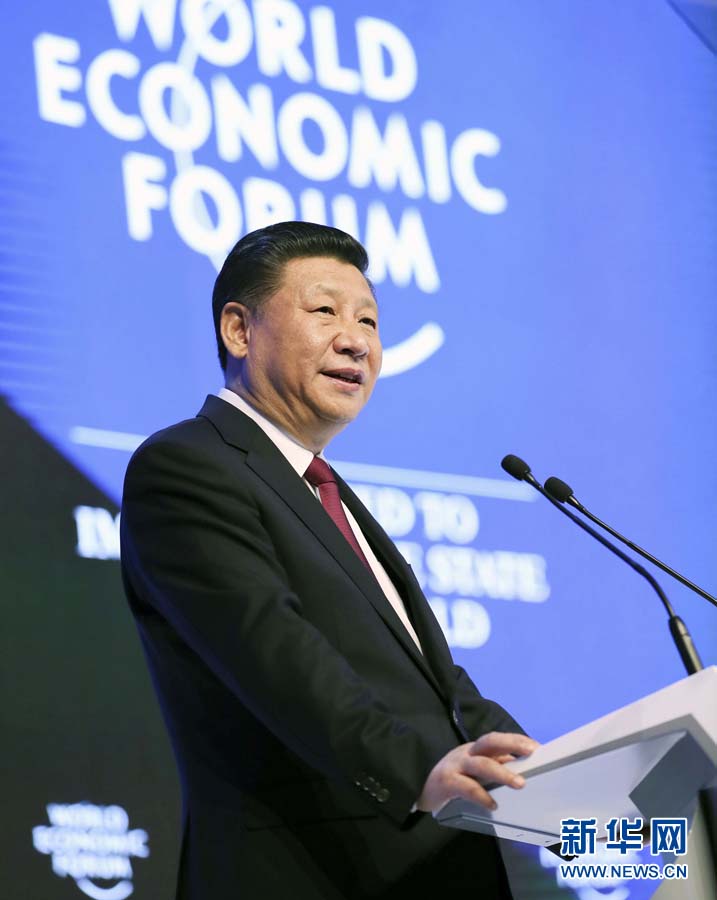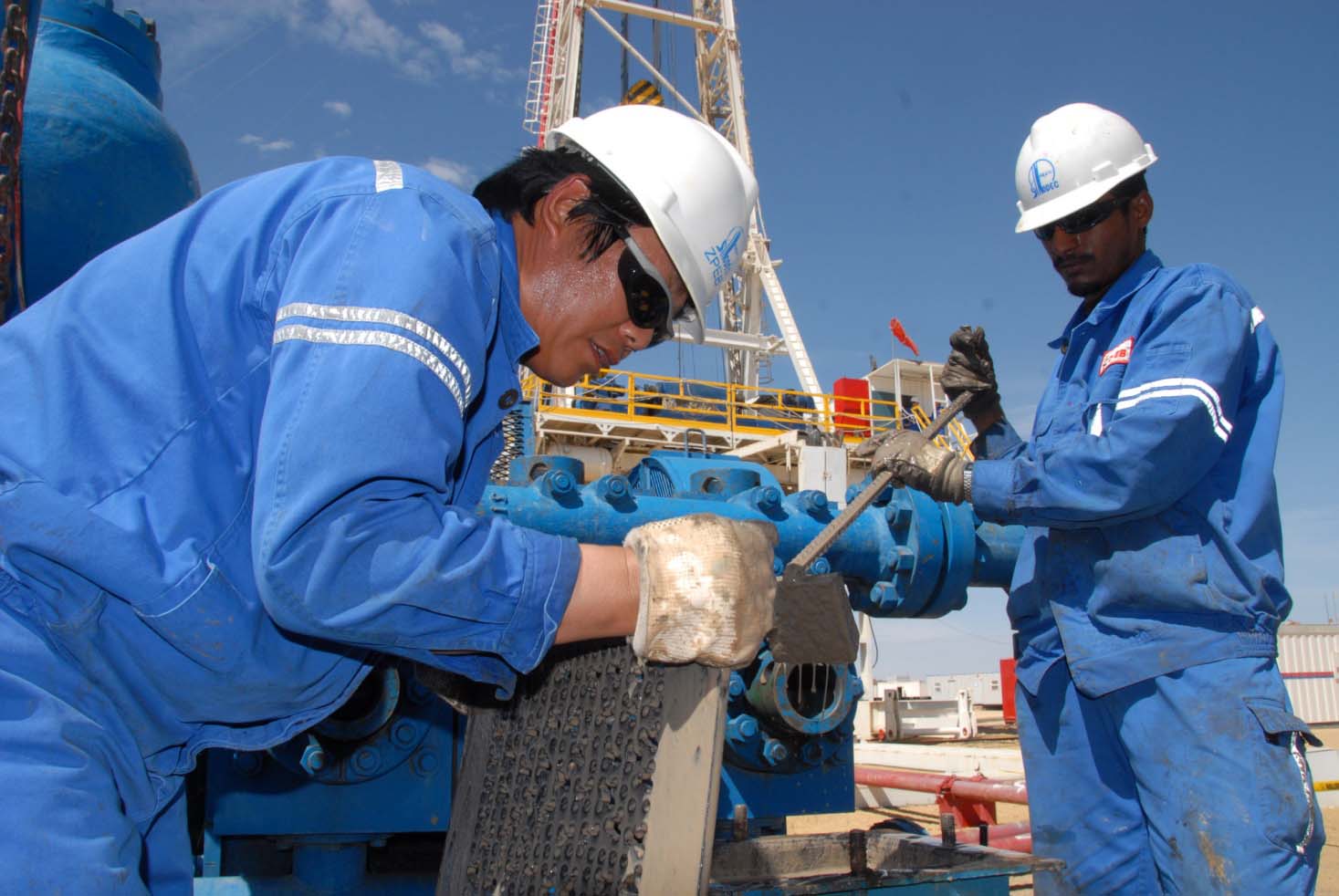Author: Huang Tianchen Editor: John Goodrich
China joined the World Trade Organization in 2001, at a time when the United States was a major global proponent of free trade and Beijing was opening its door a crack to a greater role on the world stage.
 CFP Photo
CFP Photo
Fast-forward to 2017, and China’s economic reform and opening up policies since 1978 have seen the country evolve into a global economic powerhouse, now firmly advocating globalization and multilateralism.
But as China opens its door wider, the Trump administration’s “America First” policy is taking the US on the road of protectionism and insulation.
 Demonstrators protest against US President Donald Trump outside Trump Tower in Chicago, Illinois, one month after Trump's inauguration, February 19, 2017.
Demonstrators protest against US President Donald Trump outside Trump Tower in Chicago, Illinois, one month after Trump's inauguration, February 19, 2017.
US President Donald Trump said in his inaugural address that “protection will lead to great prosperity and strength.” He plans to renegotiate the North American Free Trade Agreement - the accord between the US, Mexico and Canada agreed by former President Bill Clinton in 1994 - and has already withdrawn from the almost-completed Trans-Pacific Partnership.
Populist waves have also reached Europe, where politicians voicing protectionist, anti-immigrant rhetoric are standing for election in the Netherlands, France and Germany, this year.
Championing globalization
As sentiment in the US and Europe moves towards a rejection of globalization based on its negative consequences, China is seeking to embrace and guide the process.
The country contributes nearly 39 percent of global growth on average, according to the International Monetary Fund, and is playing a leading role in advocating globalization.
Speaking at the annual Davos Economic Forum in January 2017, President Xi Jinping told world leaders that globalization was a “double-edged sword.”
“It is true that economic globalization has created new problems, but this is no justification to write off economic globalization completely. Rather, we should adapt to it and guide it, cushion its negative impact, and deliver its benefits to all countries and all peoples,” said President Xi.
China’s economy has benefited tremendously since the reform and opening-up policies were launched, and has in turn helped the rest of the world, according to the Chinese president. China has attracted over 1.7 trillion US dollars of foreign investment and contributed over 1.2 trillion US dollars of direct outbound investment, making a huge contribution to global economic development, Xi added.
China’s total trade volume in 2000, before joining the World Trade Organization, was 474.3 billion US dollars, in comparison to 3.54 trillion US dollars in 2016.
The country’s foreign direct investment (FDI) in 2000 was 59.356 billion US dollars; that doubled to 126 billion US dollars in 2016, according to the National Bureau of Statistics.
In terms of people-to-people exchange, more than 440,000 foreign students from 205 countries and regions came to study in China in 2016, while more than 544,500 Chinese studied abroad, according to China’s Ministry of Education.
 Chinese President Xi Jinping delivers a keynote speech at the opening ceremony of the World Economic Forum in Davos, Switzerland, January 17, 2017. /Xinhua Photo
Chinese President Xi Jinping delivers a keynote speech at the opening ceremony of the World Economic Forum in Davos, Switzerland, January 17, 2017. /Xinhua Photo
China is expected to import eight trillion US dollars of goods, attract 600 billion US dollars of foreign investment and make 750 billion US dollars of outbound investment over the next five years, according to Xi.
China will keep its door wide open to allow other countries access to its market and to help China itself integrate more deeply with the world, vowed the Chinese president.
 China Sinopec workers drilling in Yemen in 2008.
China Sinopec workers drilling in Yemen in 2008.

